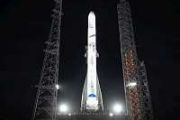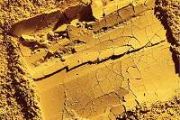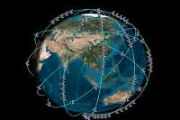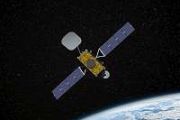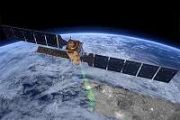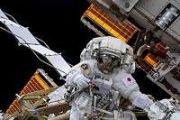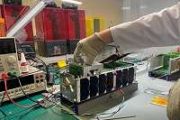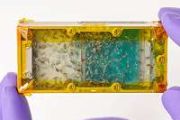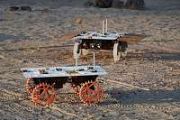
Copernical Team
Four astronauts fly SpaceX back home, end 5-month mission
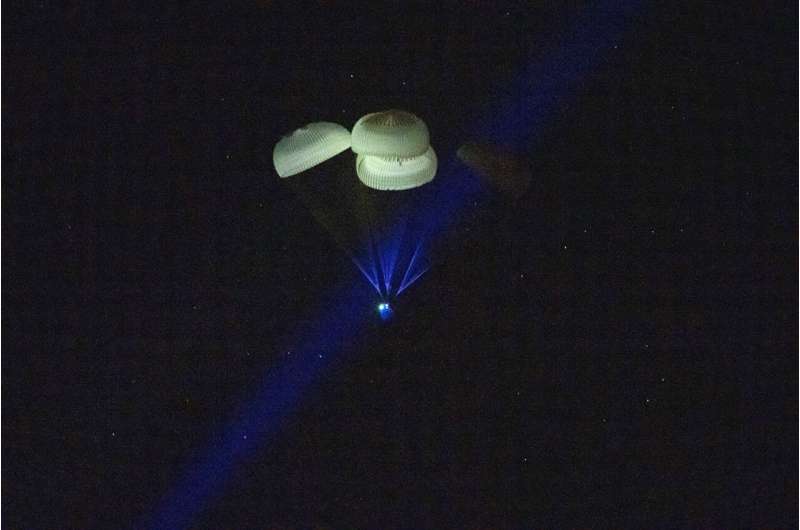
Lunar telescope will search for ancient radio waves
 Scientists at the U.S. Department of Energy's (DOE) Brookhaven National Laboratory are leading a new effort to land a radio telescope on the moon. If successful, the project will mark the first step towards exploring the Dark Ages of the universe.
The Dark Ages are an early era of cosmological history starting about 380,000 years after the Big Bang. There were no stars or planets in the Da
Scientists at the U.S. Department of Energy's (DOE) Brookhaven National Laboratory are leading a new effort to land a radio telescope on the moon. If successful, the project will mark the first step towards exploring the Dark Ages of the universe.
The Dark Ages are an early era of cosmological history starting about 380,000 years after the Big Bang. There were no stars or planets in the Da First images released from Webb largest general observer program
 The first images from the largest program in the James Webb Space Telescope's first year show many types of galaxies, including dazzling examples of spiral galaxies, gravitational lensing, and evidence of galaxy mergers. Scientists from the COSMOS-Web program released mosaic images taken in early January by JWST's Near-Infrared Camera (NIRCam) and Mid-Infrared Instrument (MIRI).
COSMOS-Web
The first images from the largest program in the James Webb Space Telescope's first year show many types of galaxies, including dazzling examples of spiral galaxies, gravitational lensing, and evidence of galaxy mergers. Scientists from the COSMOS-Web program released mosaic images taken in early January by JWST's Near-Infrared Camera (NIRCam) and Mid-Infrared Instrument (MIRI).
COSMOS-Web Neutron star reveals black hole-like behavior
 X-ray binaries are systems formed by a compact object, a neutron star or a black hole, and a star of a similar size to the Sun. The compact object swallows matter from the companion star through a disk that emits large amounts of light, especially in X-rays. This process in which the compact object attracts matter, known as accretion, usually occurs in violent eruptions during which the system b
X-ray binaries are systems formed by a compact object, a neutron star or a black hole, and a star of a similar size to the Sun. The compact object swallows matter from the companion star through a disk that emits large amounts of light, especially in X-rays. This process in which the compact object attracts matter, known as accretion, usually occurs in violent eruptions during which the system b ATLAS triples in size following integration with Viasat Real-Time Earth
 ATLAS Space Operations, the leading Ground Software as a Service (GSaaS) provider, has announced a new partnership with Viasat Real-Time Earth (RTE). The partnership between ATLAS and Viasat RTE makes 10 new antennas within the Viasat network immediately available to ATLAS clients, with two additional antennas available by the end of the year.
For ATLAS, the partnership with Viasat represe
ATLAS Space Operations, the leading Ground Software as a Service (GSaaS) provider, has announced a new partnership with Viasat Real-Time Earth (RTE). The partnership between ATLAS and Viasat RTE makes 10 new antennas within the Viasat network immediately available to ATLAS clients, with two additional antennas available by the end of the year.
For ATLAS, the partnership with Viasat represe China launches two new Earth-observation satellites
 China placed two Earth-observation satellites in space on Friday morning, according to China Aerospace Science and Technology Corp.
The State-owned space giant said the Tianhui 6A and 6B satellites were transported to orbit by a Long March 4C rocket that blasted off at 6:41 am from the Taiyuan Satellite Launch Center in Shanxi province.
Made by the China Academy of Space Technology i
China placed two Earth-observation satellites in space on Friday morning, according to China Aerospace Science and Technology Corp.
The State-owned space giant said the Tianhui 6A and 6B satellites were transported to orbit by a Long March 4C rocket that blasted off at 6:41 am from the Taiyuan Satellite Launch Center in Shanxi province.
Made by the China Academy of Space Technology i SpOC Commander highlights joint all domain command and control at AFA symposium
 Lt. Gen. Stephen Whiting, commander of Space Operations Command, took part in a joint all domain command and control panel, during the Air Force Association's 2023 Aerospace Warfare Symposium in Aurora, Colo. on Mar. 07, 2023.
The Air and Space Forces Association is an independent, non-profit, professional military association for the United States Air Force and United States Space Force.
Lt. Gen. Stephen Whiting, commander of Space Operations Command, took part in a joint all domain command and control panel, during the Air Force Association's 2023 Aerospace Warfare Symposium in Aurora, Colo. on Mar. 07, 2023.
The Air and Space Forces Association is an independent, non-profit, professional military association for the United States Air Force and United States Space Force. Kendall outlines clear path for modernizing Air, Space Forces and confronting peer competitors
 Reporting progress but conceding that "hard choices" remain, Department of the Air Force Secretary Frank Kendall offered a report card March 7 during a major address at the 2023 Air and Space Forces Association Warfare Symposium, emphasizing the need to modernize and reshape the Air Force and Space Force to confront China and other emerging powers.
While important to maintain - and sustain
Reporting progress but conceding that "hard choices" remain, Department of the Air Force Secretary Frank Kendall offered a report card March 7 during a major address at the 2023 Air and Space Forces Association Warfare Symposium, emphasizing the need to modernize and reshape the Air Force and Space Force to confront China and other emerging powers.
While important to maintain - and sustain NASA SpaceX Crew-5 splashes down after 5-month mission
 NASA's SpaceX Crew-5 returned to Earth on Saturday after a five-month stay aboard the International Space Station, livestreamed video broadcast by the US space agency showed.
The SpaceX "Endurance" capsule carried Koichi Wakata of Japan, Russian cosmonaut Anna Kikina, and NASA astronauts Nicole Mann and Josh Cassada.
It splashed down in the Gulf of Mexico shortly after 9:00 PM (0200 GMT
NASA's SpaceX Crew-5 returned to Earth on Saturday after a five-month stay aboard the International Space Station, livestreamed video broadcast by the US space agency showed.
The SpaceX "Endurance" capsule carried Koichi Wakata of Japan, Russian cosmonaut Anna Kikina, and NASA astronauts Nicole Mann and Josh Cassada.
It splashed down in the Gulf of Mexico shortly after 9:00 PM (0200 GMT Seed funding sends European software into orbit
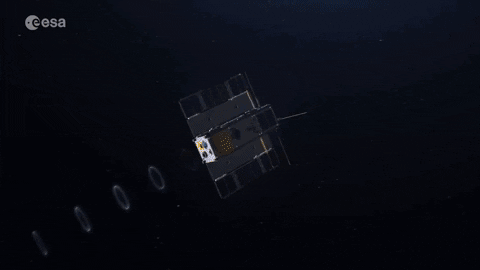
“You can read everything there is to know about driving a car, but you won’t really understand what it’s like to drive one until you get behind the wheel. That’s what it’s like to fly your software in orbit,” says David Evans, ESA’s OPS-SAT Space Lab manager.
Over the last year, 12 project teams have had the chance to experience this first hand thanks to a combination of seed funding from the Discovery element of ESA's Basic Activities and access to ESA’s experimental OPS-SAT CubeSat.











